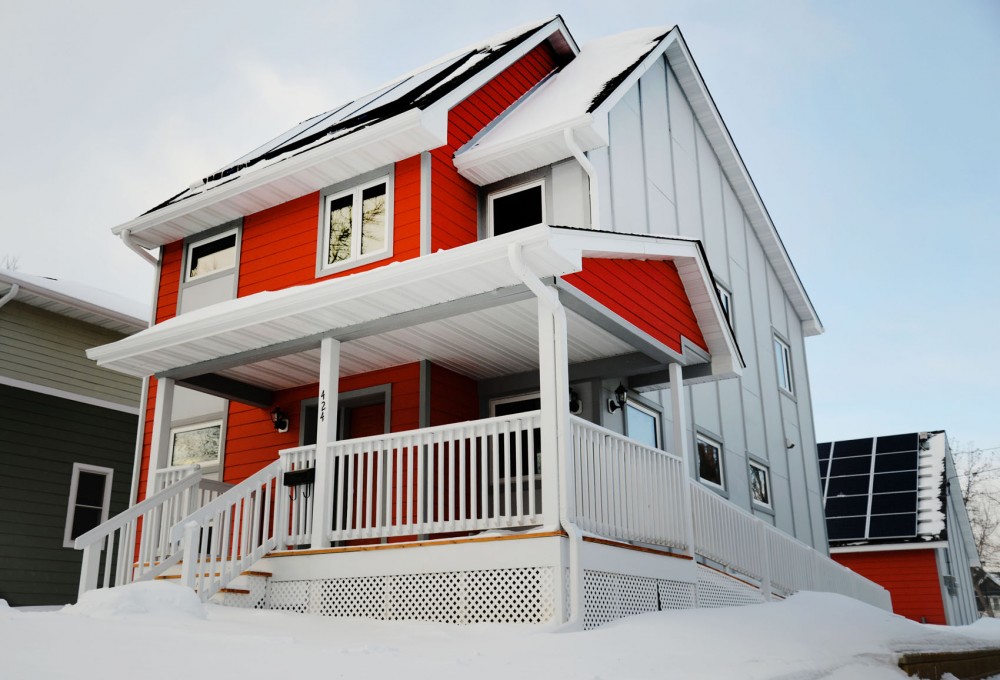Along a row of houses in north Minneapolis’ Hawthorne EcoVillage sits a bright red house with a snow-covered roof.
Though it appears like any other house in winter, a group of University of Minnesota students and faculty designed the home to generate as much energy as it uses over the course of a year.
After more than a year of design and construction, a Minneapolis family is planning to move in this week.
University students and professors began designing the home as part of two spring 2012 classes in the School of Architecture.
Gustav Johnson, a former architecture graduate student, said the project gave him hands-on work experience.
“In architecture school, mostly what you’re doing is theoretical, abstract work, so it was a great opportunity to work on a real project,” he said.
Before the class began, the School of Architecture pitched plans for an environmentally friendly home to Habitat for Humanity, which approved the designs and opted to build the home.
The house’s design focuses on energy efficiency, and it’s considered a Net Zero home, said Dan Handeen, one of the two professors who taught the class.
Net Zero buildings are designed to produce enough energy to offset their carbon emissions at the end of every year.
Handeen said the north Minneapolis house was designed with extra insulation and triple-pane windows, which trap heat in the house.
The house also has two kinds of solar panels — one that supplies electricity and one that produces energy to heat the house.
The three-bedroom, two-story home cost $243,000 to build. Thrivent Financial for Lutherans donated most of the money and supplied volunteers to build the home, said Matt Haugen, the communications director for Habitat in the Twin Cities.
Because the home uses some complex technology, Haugen said applicants had to submit an essay and say they were willing to learn how to use the technology.
Habitat officials eventually selected Sarah Olson and Abdi Mohamed to live in the home with their family.
“[They] were all on board to learn about the extra training to make the most out of living in the house,” Haugen said.








